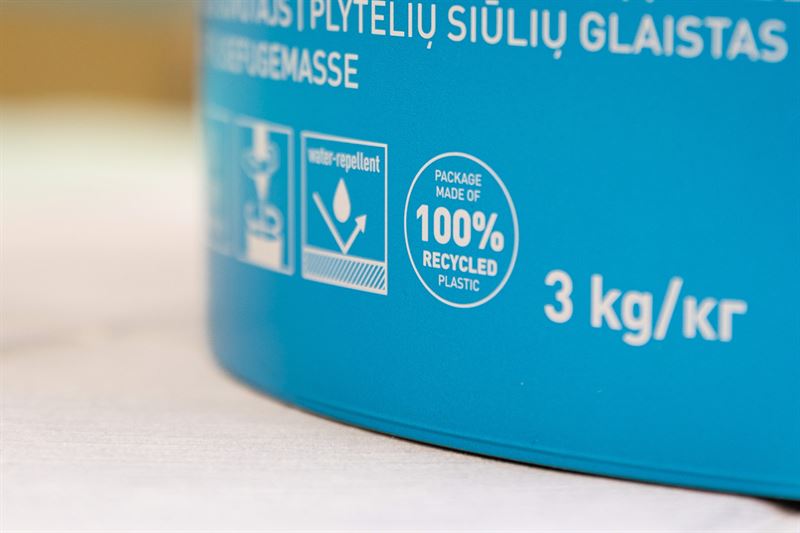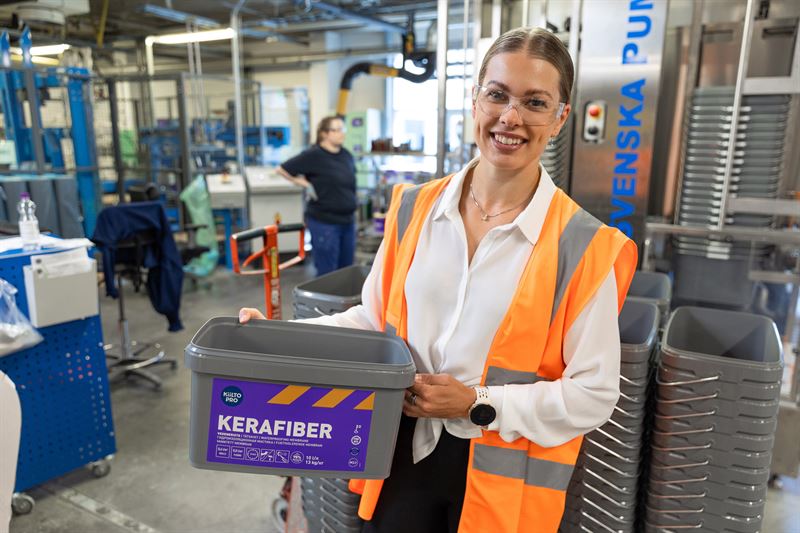How to achieve environmental goals? Five questions and answers about green packaging

Environmental goals must be concrete so that they can be measured. Concrete is not, however, synonymous with easy. It’s no use taking the path of least resistance. Instead, when setting goals, it is advisable to genuinely challenge the prevailing practices and think about which measures have the greatest impact.
One of Kiilto’s goals is that by 2025, 70 per cent of its packaging will be reusable or made of recycled or renewable materials.
According to Environmental Manager Viivi Kettula, this goal was already achieved in early 2022 at Kiilto’s factory in Lempäälä, Finland. The factory in Lempäälä produces industrial adhesives, as well as construction and fireproofing products.
Next, Kettula describes in more detail the measures and choices required to reach the goal.
How did Kiilto reach the goal three years ahead of schedule?
“We started the process four years ago by changing the material of certain buckets from virgin to recycled plastic, and nowadays our selection also includes bags made of recycled plastic. We implemented the change product by product, depending on the availability of recycled materials. Fortunately, their supply has gradually improved.”

In addition to the availability of materials, have there been any other challenges in the green transition?
“In practice, recycled plastic has a more grey tone than virgin plastic, so the appearance of the packaging may have changed a little. This, of course, is a characteristic rather than a challenge. We believe that the change in tone doesn’t bother our customers after they learn what has caused it. We have invested in actively informing our customers of the changes in packaging, to make it easier for them to always select the right product. We have not made any compromises on the quality of the packaging.”
“Generally speaking, when choosing packaging materials, it must be taken into consideration that there are special requirements for the transport of certain products. This means that recycled materials cannot be used in all cases, or at least not yet.”
How has the change of material benefited the environment in practice?
“It has helped us reduce our emissions by over 468 tonnes of carbon dioxide equivalent between 2018 and 2021. The amount corresponds to as many as 2,392 trips from Hanko to Nuorgam (1,400 km each) using a regular passenger vehicle.”
Does the use of recycled materials have any other environmental benefits?
“Absolutely. Using recycled materials instead of virgin raw materials is also always good for biodiversity.”
“Nowadays, in addition to the carbon footprint, we should pay even more attention to the carbon handprint, which means solutions providing environmental benefits. Kiilto’s environmentally friendly packaging also helps our customers reduce their carbon footprint.”

Could the carbon footprint of the packaging be reduced even further?
“Our journey continues. We are, for example, currently looking for ways to replace the metal handles in the packaging with alternatives made of recycled plastic. This would enable us to make the entire packaging of the same material. It would facilitate recycling.”
Viivi’s five tips for companies looking to switch to green packaging:
- Set a goal that is measurable and achievable, but ambitious enough to make a difference.
- Establish a determined project to achieve the goal. Proceed product by product and package by package.
- Pay attention to the special requirements of the products, regarding transport or storage, for example. These can affect the possibility of using recycled material in the packaging.
- Remember to assess the environmental impact of the measures from the point of view of biodiversity in addition to emissions. It is also advisable to think about the difference between the carbon footprints of the old and new solutions and, consequently, the resulting carbon handprint.
- Look for suitable partners and do not hesitate to contact other companies. Many circular-economy solutions require finding the right partners. We can build a more sustainable future by learning together.
Tags:




